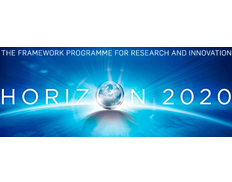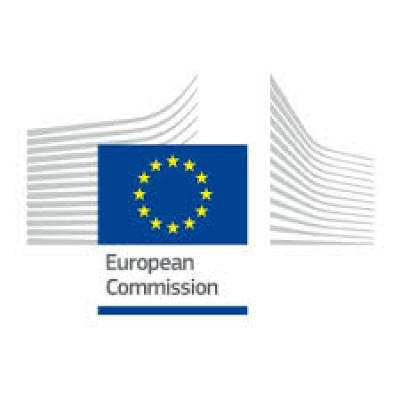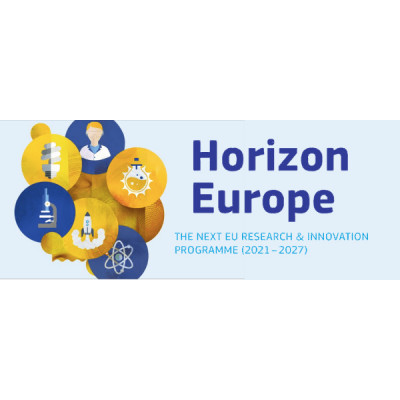
Open Disruptive Innovation Scheme (implemented through the SME instrument) Phase 1
Details
Description
Call updates:
List of beneficiaries - SME Instrument Phase I (January 2016)
Interactive map of beneficiaries
Please note that the Flash Report about the results of the fourth cut-off (25-11-2015) of H2020-SMEINST-1-2015 (Phase I) is available in the 'Additional documents' section.
List of beneficiaries - SME Instrument Phase I (January 2016)
Interactive map of beneficiaries
Please note that the Flash Report about the results of the fourth cut-off (25-11-2015) of H2020-SMEINST-1-2015 (Phase I) is available in the 'Additional documents' section.
The number of received proposals in the November cut-off (H2020-SMEINST-1-2015_25_11_2015) totals: ICT-37-2015-1=543
Information related to the November cut-off (25/11/2015)
In 2016, we will adapt the evaluation and cut-offs rhythm. This shall allow us to inform applicants faster, in particular during summer and at the end of the year. At the same time, we will decouple the evaluation of the phases, which shall lead to a shorter time span for signing grants in Phase 2.
During the transition period between November 2015 and February 2016, we will not be able to guarantee information to applicants for immediate resubmission.
Thank you for your understanding,
16 November 2015 11:12
05 November 2015 17:31
List of beneficiaries - SME Instrument Phase I (October update)
Interactive map of beneficiaries
Please note, the release on the 5th of November 2015, of the Flash Report about the results of the third cut-off (17-09-2015) of H2020-SMEINST-1-2015 (Phase I).
22 September 2015 10:38
The number of received proposals in the September cut-off (H2020-SMEINST-1-2015_17_09_2015) totals : ICT-37-2015-1=442
List of beneficiaries - SME Instrument Phase I (July update)
Please note, the release on the 24th of July 2015, of the Flash Report about the results of the second cut-off (17-06-2015) of H2020-SMEINST-1-2015.
24 June 2015 10:51
The number of received proposals in the June cut-off (H2020-SMEINST-1-2015_17_06_2015) totals : ICT-37-2015-1=530
Please note, the release on the 8th of May 2015, of the Flash Report about the results of the first cut-off (18-03-2015) of H2020-SMEINST-1-2015.
List of beneficiaries - SME Instrument Phase 1 (April update)
Interactive map of beneficiaries
26 March 2015 09:54
List of beneficiaries - SME Instrument Phase 1 (March update)
Interactive map of beneficiaries
The number of proposals received in relation to the first 2015 cut-off of Phase 1, totals 1,569.
List of beneficiaries - SME Instrument Phase 1
Interactive map of beneficiaries
18 December 2014 11:33
The submission session is now available for: ICT-37-2015-1(SME-1)
TOPIC : Open Disruptive Innovation Scheme (implemented through the SME instrument)
| Topic identifier: | ICT-37-2015-1 | ||
| Publication date: | 11 December 2013 | ||
| Types of action: | SME-1 SME instrument phase 1 | ||
| DeadlineModel: Opening date: |
multiple cut-off 18 December 2014 |
Cut-off dates: | 18 March 2015 17:00:00 17 June 2015 17:00:00 17 September 2015 17:00:00 25 November 2015 17:00:00 |
| Time Zone : (Brussels time) | |||
Call identifier: H2020-SMEINST-2014-2015
Topic Description
Scope:Specific Challenge: The challenge is to provide support to a large set of early stage high risk innovative SMEs in the ICT sector. Focus will be on SME proposing innovative ICT concept, product and service applying new sets of rules, values and models which ultimately disrupt existing markets.
The objective of the ODI is threefold:
- Nurture promising innovative and disruptive ideas;
- Support their prototyping, validation and demonstration in real world conditions;
- Help for wider deployment or market uptake.
Proposed projects should have a potential for disruptive innovation and fast market up-take in ICT.
In particular it will be interesting for entrepreneurs and young innovative companies that are looking for swift support to their innovative ideas.
The ODI objective will support the validation, fast prototyping and demonstration of disruptive innovation bearing a strong EU dimension.
Scope:ODI will be implemented through the SME instrument which consists of three separate phases and a coaching and mentoring service for beneficiaries. Participants can apply to Phase 1 with a view to applying to Phase 2 at a later date, or directly to Phase 2.
In phase 1, a feasibility study shall be developed verifying the technological/practical as well as economic viability of an innovation idea/concept with considerable novelty to the industry sector in which it is presented (new products, processes, design, services and technologies or new market applications of existing technologies). The activities could, for example, comprise risk assessment, market study, user involvement, Intellectual Property (IP) management, innovation strategy development, partner search, feasibility of concept and the like to establish a solid high-potential innovation project aligned to the enterprise strategy and with a European dimension. Bottlenecks in the ability to increase profitability of the enterprise through innovation must be detected and analysed during phase 1 and addressed during phase 2 to increase the return in investment in innovation activities. The proposal should contain an initial business plan based on the proposed idea/concept.
The proposal should give the specifications of the elaborated business plan, which is to be the outcome of the project and the criteria for success.
Funding will be provided in the form of a lump sum of EUR 50.000. Projects should last around 6 months.
In phase 2, innovation projects will be supported that address the specific challenge ODI and that demonstrate high potential in terms of company competitiveness and growth underpinned by a strategic business plan. Activities should focus on innovation activities such as demonstration, testing, prototyping, piloting, scaling-up, miniaturisation, design, market replication and the like aiming to bring an innovation idea (product, process, service etc) to industrial readiness and maturity for market introduction, but may also include some research. For technological innovation a Technology Readiness Levels of 6 or above (or similar for non-technological innovations) are envisaged; please see part G of the General Annexes.
Proposals shall be based on an elaborated business plan either developed through phase 1 or another means. Particular attention must be paid to IP protection and ownership; applicants will have to present convincing measures to ensure the possibility of commercial exploitation ('freedom to operate').
Proposals shall contain a specification for the outcome of the project, including a first commercialisation plan, and criteria for success.
The Commission considers that proposals requesting a contribution from the EU of between EUR 0.5 and 2.5 million would allow phase 2 to be addressed appropriately. Nonetheless, this does not preclude submission and selection of proposals requesting other amounts. Projects should last between 12 and 24 months.
In addition, in phase 3, SMEs can benefit from indirect support measures and services as well as access to the financial facilities supported under Access to Risk Finance of this work programme.
Successful beneficiaries will be offered coaching and mentoring support during phase 1 and phase 2. This service will be accessible via the Enterprise Europe Network and delivered by a dedicated coach through consultation and signposting to the beneficiaries. The coaches will be recruited from a central database managed by the Commission and have all fulfilled stringent criteria with regards to business experience and competencies. Throughout the three phases of the instrument, the Network will offer to complement the coaching support by providing access to its innovation and internationalisation service offering. This could include, for example, depending on the need of the SME, support in identifying growth potential, developing a growth plan and maximising it through internationalisation; strengthening the leadership and management skills of individuals in the senior management team and developing in-house coaching capacity; developing a marketing strategy or raising external finance.
Expected impact:
Enhancing profitability and growth performance of SMEs by combining and transferring new and existing knowledge into innovative, disruptive and competitive solutions seizing European and global business opportunities.
Market uptake and distribution of ICT innovations.
Increase of private investment in innovation, notably through private co-investments and/or follow-up investments in successfully supported SMEs.
The expected impact should be clearly substantiated in qualitative and quantitative terms (e.g. on turnover, employment, market seize, IP management, sales, return on investment and profit).
Types of action: SME Instrument (70%)



